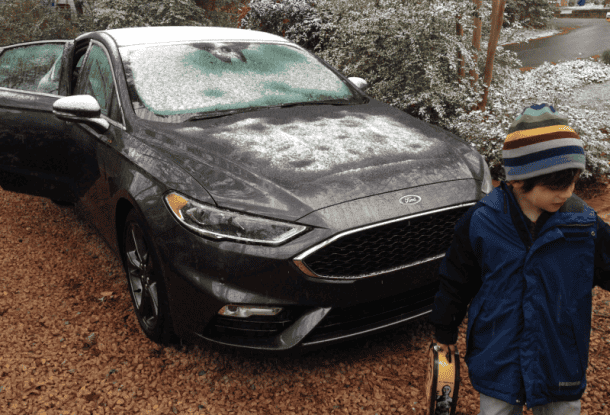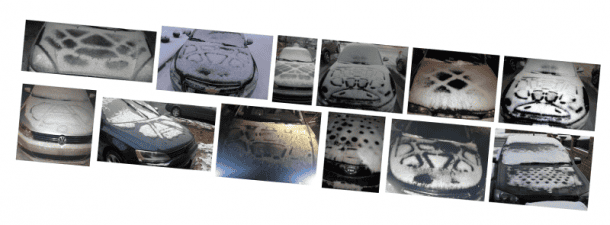The winter season is on its peak, and with it comes all the snowy mysteries related to automobiles. The snow presents hundreds of inconveniences for a car owner, from cleaning out the driveway to dealing with a frozen radiator, but also brings a couple of fascinating mystics.
Have you ever wondered what’s the reason behind those incredibly intricate snow patterns on your car’s hood after a snow fall? Why do these patterns repeat so perfectly? Is it all a coincidence or is there something more to it?
Gizmodo’s Jason Torchinsky was on the case, as he investigated this “deep dark mystery.” While the article might get a ton lot more views if we somehow relate the patterns to the alien crop circles trying to communicate with us in the most stupid way possible, obviously a little knowledge of elementary physics and common sense is enough to crack the code.

If you look at the snowmelt patterns closely, they resemble the same features as at the underside of the hood. While one might get tempted to say that a larger amount of mass somehow helps melt the snow faster, this is not true if the whole body is at roughly the same temperature (before starting the engine for example).
The real reason behind the patterns are the pockets of air that the struts trap within their intricacies. Since air is a very good insulator, it holds a certain amount of heat along the same patterns as made by the metal inside the bonnet, thus helps melt the snow above leading to the patterns.

This case will obviously be reversed if the engine is running since the insulator air will now remain relatively colder than rest of the uncovered hood, thus explaining the unmelted snow patterns you find after you have driven your car.
This was testified by a physicist Dr. Stephen Granade when inquired by Jason Torchinsky,
You’re absolutely right, Jason: the air trapped in the under-hood support is acting as an insulator. Air that isn’t moving around is a great insulator, because the atoms in air are far apart and heat energy doesn’t move quickly through it. Metals have a high thermal conductivity — they pass heat through very quickly — because their atoms are much more tightly packed. It’s why metal is used for pots and pans. The heat spreads through them quickly so that you don’t get some spots that are hotter than others, potentially scorching your meal.
The insulating air in the under-hood support makes parts of your car hood change temperature more slowly than other parts. The parts of the hood over the supports won’t heat up as fast when the engine is running, and they won’t cool down as fast when the snow begins.
Weirdly, that means that your hood might make different patterns depending on the situation. If you’ve just started driving your car and it begins to snow, then the parts of the hood over the supports will be insulated from the engine heat. Because they’re a bit cooler than the rest of the hood, you’ll get a bigger buildup of snow on those parts than on the bare metal parts of the hood. However, if your car’s been parked and the temperature drops enough for it to begin to snow, or your hood’s absorbed some of the heat from the feeble, feeble winter sun, then the bare metal parts of the hood will cool faster. You’ll get a bit of melting happening over the hood supports. Because of this, you can end up with a hood with more snow over the supports, or with more snow over the bare metal parts of the hood. The two patterns are like Flash and Reverse Flash, only with less confusing time travel continuity.
The air will trap some of the heat energy and slowly release it back into the hood. It won’t store a lot of heat energy. It has low thermal mass, the measure of how much heat a substance can soak up before it changes temperature. But it’ll store some. The air will also insulate the bottom part of the support from the cold air outside the hood. The bottom support will release its heat back to the top part of the hood. Modeling heat flow gets tricky, which is why professionals use sophisticated software.
Have any other explanation for the snow “crop circles” on your car’s bonnet? Share ’em in the comments’ section below!


